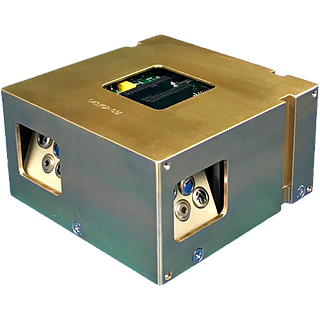The ADCS Subsystem
The Attitude Determination & Control System (ADCS) is responsible for controlling the orientation of the spacecraft based on information from the ground as well as its various sensors. During imaging passes, the ADCS will use its sensors to interpret the location of the target city, based on a lat/long coordinate provided by the mission operations team and then track the target as the spacecraft flies overhead. The tracking method is referred to as slewing, in which the ADCS keeps the camera fixed at a specific ground location while the rest of the satellite continues to move and track the location on the ground. This allows the CubeSat to produce images at the resolution required for the science investigation.
The ADCS was selected as the MAI-400 ADCS unit from Maryland Aerospace for its cost efficiency and ability to meet all mission requirements.Attitude control is performed using a set of three reaction wheels and three magnetorquers to control each axis of the spacecraft. Pointing knowledge is provided through a set of six external sun sensors, which track the orientation of the sun and an onboard magnetometer, which determines orientation based on the Earth’s magnetic field. The attitude rate is determined by an onboard MEMS gyroscope. Finally, the ADCS incorporates two Earth Horizon Sensors (EHS), which are infrared cameras that interpret the cold of space vs the warm temperature of the Earth to sense the spacecraft’s orientation based on the Earth’s horizon line. The EHS are the most accurate of the ADCS’s attitude determination sensors, and are essential for allowing the cubesat to track to ground targets with high fidelity.
As the ADCS is a commercial off-the-shelf component, it is the responsibility of the student team to ensure that the ADCS is prepared to conduct mission operations once the satellite is in orbit. For the ADCS team, this includes understanding how to command it and communicating these requirements to the software team, as well as ensuring that the sun sensors and magnetometer are calibrated prior to flight and that the hardware is calibrated with proportional and derivative gains that are designed to fit the spacecraft’s design.
